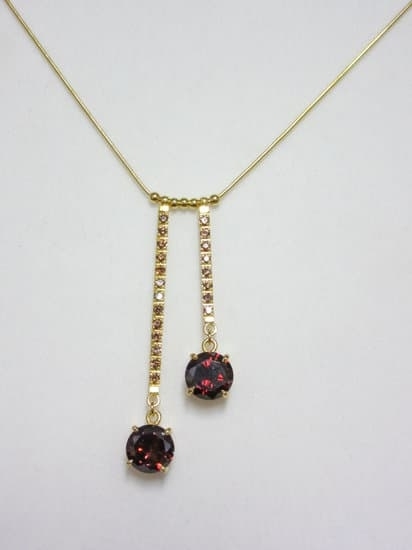Armbands jewelry has a rich and fascinating history that dates back to ancient civilizations. The use of armbands as a form of adornment has evolved over the centuries, with cultural significance and symbolism playing a prominent role in its design and wearing. From ancient civilizations to modern fashion trends, armbands jewelry has continued to captivate people’s attention with its intricate designs and artistic techniques.
The origins of armbands can be traced back to ancient civilizations such as the Egyptians, Greeks, and Romans, where they were worn as a symbol of status and power. As time progressed, armbands jewelry evolved alongside different cultures, adopting new materials and techniques that reflected the changing fashion trends of each era.
Throughout history, armbands jewelry has been used to convey various messages and meanings, often serving as symbols of protection, bravery, or belonging within a community. This article provides an in-depth exploration into the origins, evolution, cultural significance, and symbolism of armbands jewelry from ancient civilizations to modern times. Additionally, it examines the famous armbands jewelry throughout history and delves into the materials and techniques used in their making.
The Origins of Armbands Jewelry in Ancient Civilizations
Armbands jewelry has a rich history that dates back to ancient civilizations, where it was considered not only as an adornment but also as a symbol of status and power. The origins of armbands jewelry can be traced back to Egypt, Mesopotamia, and Greece, where it was worn by both men and women as a reflection of their social standing and prosperity.
Egypt
In ancient Egypt, armbands were commonly worn by both men and women of high social status. These elaborate pieces of jewelry were often made from gold and adorned with precious gemstones such as lapis lazuli, turquoise, and carnelian. They were not only decorative but also served as protective talismans believed to ward off evil spirits.
Mesopotamia
In Mesopotamia, armbands were worn as a symbol of wealth and luxury. The Sumerians and Babylonians crafted armbands from gold, silver, and semi-precious stones, often featuring intricate designs inspired by nature, mythology, and religious symbolism. These armbands were worn during special ceremonies and important events.
Greece
Armbands jewelry in ancient Greece was also a significant part of fashion and culture. Both men and women wore armbands made from precious metals such as gold or silver. These armbands were often decorated with motifs inspired by Greek mythology or featured intricate patterns symbolizing strength, resilience, and endurance.
The history of armbands jewelry in ancient civilizations provides valuable insight into the cultural significance of these accessories as symbols of power, wealth, and identity. Through the centuries, the tradition of wearing armbands has continued to evolve while maintaining its timeless appeal in today’s modern world.
Evolution of Armbands Jewelry Through the Centuries
Armbands jewelry has a rich history that dates back to ancient civilizations, where it was worn for religious, cultural, and decorative purposes. The evolution of armbands jewelry through the centuries reflects the changing trends in fashion, as well as the advancements in technology and craftsmanship.
In ancient Egypt, armbands were worn by both men and women as symbols of status and wealth. They were often made from precious metals such as gold and adorned with intricate engravings and gemstones. These armbands were considered valuable possessions that were passed down through generations, highlighting their significance in Egyptian society.
During the medieval period in Europe, armbands jewelry became popular among royalty and nobility. They were often embellished with detailed patterns and heraldic symbols to denote family lineage and social standing. Armbands also served as protective amulets believed to ward off evil spirits and bring good fortune to the wearer.
In more recent history, the Victorian era saw a resurgence of interest in armbands jewelry, with designs inspired by nature and romantic motifs. This period also marked the use of new materials such as silver and copper in armbands jewelry making, expanding the range of options for consumers. Today, people are increasingly drawn to vintage-inspired armbands jewelry, reflecting a continued appreciation for its timeless appeal.
| Historical Period | Characteristics |
|---|---|
| Ancient Egypt | Precious metals, gemstones, status symbol |
| Medieval Europe | Heraldic symbols, protective amulets |
| Victorian era | Nature-inspired designs, new materials like silver and copper |
Cultural Significance and Symbolism of Armbands Jewelry
Armbands jewelry has played a significant role in various cultures throughout history, with each culture attributing different meanings and symbolism to these beautiful adornments. Whether worn as a status symbol, for religious or spiritual purposes, or simply as a fashion statement, armbands jewelry holds deep cultural significance.
Religious and Spiritual Symbolism
In many ancient civilizations, armbands jewelry was not only seen as a decorative accessory but also held religious and spiritual significance. For example, in Hindu culture, armbands called “bajuband” are worn during religious ceremonies and festivals as a symbol of protection and strength.
In ancient Egypt, armbands were often worn to ward off evil spirits and bring good fortune to the wearer. These examples highlight the important role that armbands jewelry played in the spiritual and religious practices of various cultures throughout history.
Status and Symbol of Power
In some societies, armbands jewelry served as a symbol of status and power. In ancient Rome, soldiers adorned themselves with arm cuffs known as “armillae” to showcase their rank and achievements in battle. Similarly, in some Native American tribes, leaders and warriors would wear ornate armbands to signify their position within the community. The intricate designs and materials used in these armbands reflected not only the wearer’s status but also their connection to their culture’s traditions and values.
Celebration of Culture and Heritage
Armbands jewelry has also been used to celebrate cultural traditions and heritage. In many African tribes, elaborate armbands are worn during traditional ceremonies and rituals to honor ancestral traditions. These pieces often feature symbols and patterns that hold deep meaning within the community’s cultural narrative. Similarly, in countries such as India and Thailand, brides often wear intricately designed armbands as part of their wedding attire to symbolize their connection to tradition and heritage.
The symbolism associated with armbands jewelry varies widely across different cultures but remains an integral part of our shared human history. Whether used for religious rituals, status display, or celebration of heritage, these adornments continue to hold deep meaning for individuals around the world.
Famous Armbands Jewelry Throughout History
Armbands jewelry has been a significant part of various cultures and civilizations throughout history. From ancient Egypt to the Roman Empire, armbands have been worn by both men and women as symbols of wealth, power, and status. In some societies, armbands were also used for military identification or ceremonial purposes. These adornments have evolved over time and have continued to be an important fashion statement in modern times.
One famous example of armbands jewelry from history is the ancient Egyptian “armlets,” which were worn by pharaohs and other high-ranking individuals. These intricately designed gold armbands were adorned with precious gems and symbolic engravings, showcasing the wealth and royalty of the wearer.
Additionally, in ancient Rome, soldiers wore leather armbands known as “armillae” as a form of identification and decoration. These armillae often featured unique designs and inscriptions that represented the legion or unit to which the soldier belonged.
During the medieval period in Europe, knights donned metal armbands as part of their armor for protection in battle. These armbands were often elaborately decorated with heraldic symbols or crests to represent the knight’s family or kingdom. Furthermore, indigenous tribes across various continents also crafted armbands out of natural materials such as bone, wood, and shells, each carrying its own cultural significance and artistic value.
Overall, famous examples of armbands jewelry throughout history illustrate its diverse roles in different societies and eras. Whether serving as a symbol of authority, protection in combat, or simply a fashion statement, armbands have maintained their significance across time.
| Example | Description |
|---|---|
| Ancient Egyptian “armlets” | Intricately designed gold armbands adorned with gems; symbolized wealth and royalty |
| Roman “armillae” | Leather armbands worn by soldiers for identification; featured unique designs representing their legion or unit |
| Medieval knight’s armor | Metal armbands adorned with family crests for protection in battle; represented the knight’s lineage |
Materials and Techniques Used in the Making of Armbands Jewelry
When it comes to armbands jewelry, the materials and techniques used in their creation are as diverse and varied as the cultures that have crafted them throughout history. From ancient civilizations to modern artisans, armbands jewelry has been fashioned using a wide array of materials such as gold, silver, bronze, copper, leather, beads, shells, and even feathers. The techniques employed in creating these intricate pieces include metalworking, casting, weaving, engraving, beading, and embroidery.
Throughout history, different civilizations have developed unique methods for crafting armbands jewelry. In ancient Egypt, for example, gold and precious stones were often used to create ornate armbands that were worn by royalty and the elite.
Meanwhile, Indigenous peoples in various parts of the world utilized natural resources such as shells and animal bones to create their own versions of armbands. These examples highlight the rich diversity of materials and techniques that have been utilized in the production of armbands jewelry.
In modern times, advancements in technology have allowed for even more innovation in the creation of armbands jewelry. While traditional crafting techniques are still utilized by many artisans, new methods such as 3D printing and laser cutting have opened up a world of possibilities for designers. Additionally, a focus on sustainability has led to a resurgence in the use of eco-friendly materials like recycled metals and ethically sourced gemstones in the making of armbands jewelry.
Modern Trends in Armbands Jewelry and Its Influence on Fashion
Armbands jewelry has a rich history that dates back to ancient civilizations, where they were worn for both adornment and significance. As time went by, the style and materials used in armbands jewelry evolved, reflecting the changing cultural and fashion trends throughout the centuries. Today, armbands jewelry continues to be a popular accessory, with modern trends influencing its design and impact in the fashion industry.
Modern trends in armbands jewelry have seen a resurgence of interest in ancient styles and designs. Many designers are drawing inspiration from the past, incorporating traditional motifs and techniques into their contemporary pieces. This blend of old and new creates a unique appeal for consumers looking for statement accessories that speak to both history and modernity.
In addition to traditional influences, modern armbands jewelry also reflects current fashion trends. From minimalist designs to bold and chunky styles, there is a wide range of options available to suit different tastes and preferences. Furthermore, the use of sustainable materials and ethical production practices has become an important consideration for many consumers, leading to an increase in eco-friendly armbands jewelry options.
The Future of Armbands Jewelry
In conclusion, the history of armbands jewelry is a rich tapestry that dates back to ancient civilizations and has evolved through the centuries. As we have explored, armbands jewelry has held cultural significance and symbolism in various societies, from being worn as a symbol of status and power to representing spirituality and protection. The materials and techniques used in making armbands have also varied over time, reflecting the available resources and craftsmanship of different eras.
Looking ahead, it is fascinating to consider the future of armbands jewelry. With modern trends influencing fashion, we can expect to see emerging styles and designs that continue to push the boundaries of creativity. The fusion of traditional craftsmanship with contemporary aesthetics is likely to result in innovative pieces that appeal to a wide range of consumers.
Furthermore, as global cultures continue to intermingle, we may witness a further blending of traditional armbands styles with modern influences. This could lead to new interpretations and adaptations that honor the rich history of armbands jewelry while embracing the ever-changing landscape of fashion. No matter what the future holds, one thing is certain: the allure of armbands jewelry will endure, captivating generations to come with its timeless beauty and cultural significance.
Frequently Asked Questions
What Does the Armband Symbolize?
The armband symbolizes different things in different cultures, but generally, it represents strength, leadership, and sometimes a sense of authority. In some cases, it also signifies membership in a particular group or organization.
What Does the Armlet Symbolize?
The armlet also symbolizes various meanings depending on the culture and context. It can represent protection, spiritual connection, or even status and wealth. In some cultures, armlets are worn as part of traditional attire for ceremonial purposes.
Where Did the Armlet Come From?
The armlet has been worn by people across various civilizations throughout history. Its origins can be traced back to ancient civilizations such as the Egyptians, Greeks, Romans, and Indians who wore armlets as decorative or symbolic accessories. Over time, the armlet has evolved and adapted to different cultural practices and beliefs around the world.

Welcome to my jewelry blog! My name is Sarah and I am the owner of this blog.
I love making jewelry and sharing my creations with others.
So whether you’re someone who loves wearing jewelry yourself or simply enjoys learning about it, be sure to check out my blog for insightful posts on everything related to this exciting topic!





